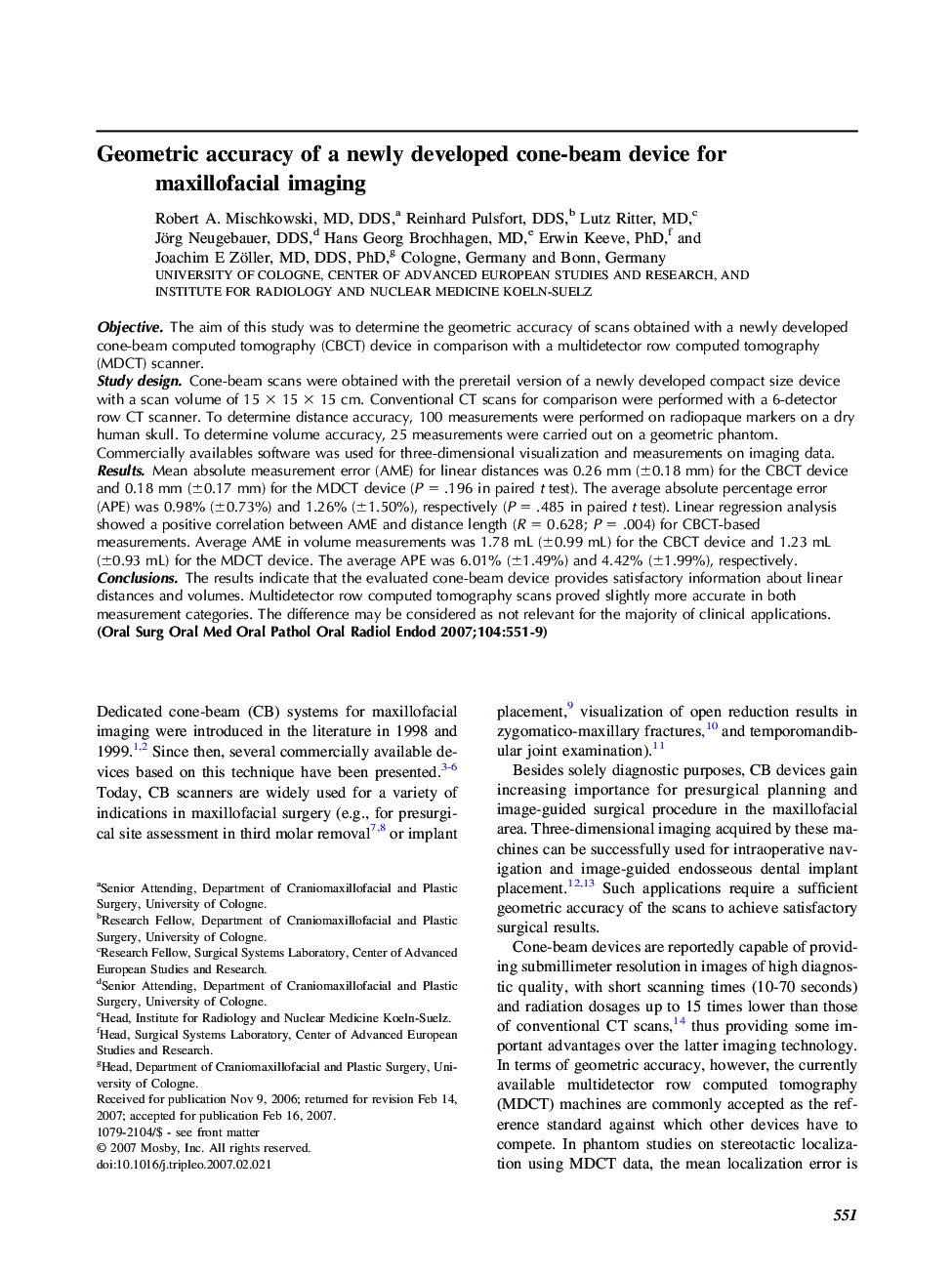| Article ID | Journal | Published Year | Pages | File Type |
|---|---|---|---|---|
| 3169306 | Oral Surgery, Oral Medicine, Oral Pathology, Oral Radiology, and Endodontology | 2007 | 9 Pages |
ObjectiveThe aim of this study was to determine the geometric accuracy of scans obtained with a newly developed cone-beam computed tomography (CBCT) device in comparison with a multidetector row computed tomography (MDCT) scanner.Study designCone-beam scans were obtained with the preretail version of a newly developed compact size device with a scan volume of 15 × 15 × 15 cm. Conventional CT scans for comparison were performed with a 6-detector row CT scanner. To determine distance accuracy, 100 measurements were performed on radiopaque markers on a dry human skull. To determine volume accuracy, 25 measurements were carried out on a geometric phantom. Commercially availables software was used for three-dimensional visualization and measurements on imaging data.ResultsMean absolute measurement error (AME) for linear distances was 0.26 mm (±0.18 mm) for the CBCT device and 0.18 mm (±0.17 mm) for the MDCT device (P = .196 in paired t test). The average absolute percentage error (APE) was 0.98% (±0.73%) and 1.26% (±1.50%), respectively (P = .485 in paired t test). Linear regression analysis showed a positive correlation between AME and distance length (R = 0.628; P = .004) for CBCT-based measurements. Average AME in volume measurements was 1.78 mL (±0.99 mL) for the CBCT device and 1.23 mL (±0.93 mL) for the MDCT device. The average APE was 6.01% (±1.49%) and 4.42% (±1.99%), respectively.ConclusionsThe results indicate that the evaluated cone-beam device provides satisfactory information about linear distances and volumes. Multidetector row computed tomography scans proved slightly more accurate in both measurement categories. The difference may be considered as not relevant for the majority of clinical applications.
